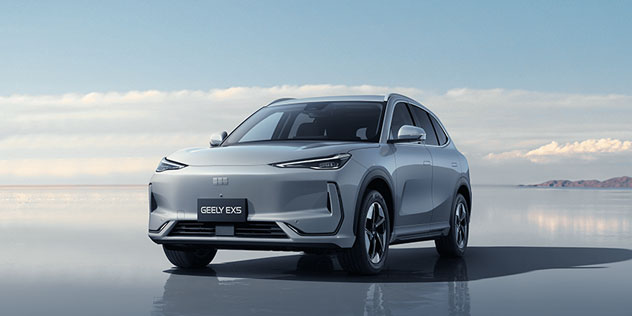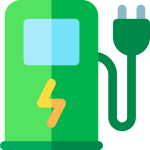
Geely Auto has moved swiftly to establish a presence in Australia’s increasingly competitive new-car market. After launching the mid‑size Geely EX5 electric SUV in early 2025 – a model pitched aggressively on price and features against the likes of the Tesla Model Y and positioned close in size to the Toyota RAV4 – the Chinese automaker has confirmed plans to broaden its local lineup. A hybrid variant, the Starray EM‑i, is slated for a Q4 2025 arrival, while Geely has publicly signalled an ambition to open more than 100 dealer outlets across Australia to support sales and aftercare as it scales up.
Why Geely matters to the Australian market
- Rapid electrification: Australia’s uptake of battery-electric vehicles (BEVs) and hybrids has accelerated through the early 2020s, and new-market entrants such as Geely increase consumer choice, particularly in value-sensitive segments.
- Global pedigree: Geely is the corporate parent of well‑known international marques and technology ventures. That depth of engineering and investment helps explain its push into volume EV and hybrid production, and lends credibility to its Australian ambitions.
- Pricing disruption: Geely has emphasised competitive pricing for the EX5, aiming to undercut some established rivals and appeal to buyers who prioritise value for money over brand prestige.
Current and upcoming Geely models in Australia
- Geely EX5 (available from early 2025)
- Description: A mid‑size electric SUV introduced as Geely’s first Australian model.
- Positioning: Marketed as a value proposition in the mid‑sized SUV class. It is offered in two trim levels and targets buyers weighing price, technology and interior space against established alternatives.
- Market role: Intended to draw interest from cost‑conscious private buyers and fleets seeking an affordable BEV option.
- Geely Starray EM‑i (expected Q4 2025)
- Description: A mid‑size hybrid SUV built around Geely’s EM‑i hybrid technology.
- Positioning: A complementary product to the EX5 – aimed at buyers who prefer hybrid drivetrains for extended range, fuel flexibility and lower perceived charging dependency.
- Timing and impact: If introduced on schedule, the EM‑i will broaden Geely’s appeal to more conservative buyers and those in regions where public charging infrastructure is still developing.
Geely’s broader Australian strategy
- Product breadth: Geely has stated its intent to supply a full suite of electric and hybrid vehicles to the Australian market rather than remaining a single‑model entrant. That roadmap suggests future models across SUVs, passenger cars and potentially crossovers.
- Dealer and service network: Demonstrating awareness of one of the biggest barriers for new brands, Geely aims to build a comprehensive sales and aftersales footprint – targeting more than 100 dealer outlets by the end of 2025 to provide local servicing, warranty repairs and customer confidence.
- Aftermarket and support: A dense dealer network will be critical for warranty fulfilment, software updates, parts supply and maintaining resale values – all key considerations for buyers of newer OEMs in Australia.
What this means for Australian buyers
- Greater choice: More affordable EV and hybrid options can accelerate adoption, particularly among suburban and regional buyers sensitive to upfront cost.
- Value versus legacy concerns: Geely’s pricing and technology will attract attention, but prospective buyers should weigh up brand recognition, long‑term resale value and dealer coverage when making purchase decisions.
- Fleet and business uptake: Cost‑focused fleets may find the EX5 attractive, while the EM‑i could appeal to mixed‑use fleets that require flexibility between electric and petrol‑assisted range.
Key considerations before you buy a Geely
- Service footprint: Confirm the nearest authorised service centre and ask about parts availability and turnaround times – especially if you live regionally.
- Warranty and battery support: Ask for written details on vehicle and battery warranties, including duration, mileage limits and conditions.
- Charging compatibility and home setup: Verify the EX5’s public charging standards (Australian public chargers typically use CCS) and assess whether your home or workplace charging arrangements are adequate.
- Software and updates: Clarify how over‑the‑air updates are handled, whether they’re complimentary, and how dealerships will support software‑related service.
- Total cost of ownership: Compare expected running costs (fuel/charging, servicing, insurance) and projected resale values against rivals such as Toyota hybrids and established EV models.
- Test drive and real‑world checks: Organise a test drive that includes highway and urban use, and request a demonstration of infotainment, ADAS (advanced driver assistance systems) and connected services.
Challenges and risks for Geely in Australia
- Brand recognition and consumer trust: New entrants must overcome conservative buyer habits in some segments, especially for higher‑value purchases.
- Resale values: Without a long sales history locally, residual values may be uncertain – something buyers should factor into lease versus purchase decisions.
- Infrastructure and regional coverage: Despite dealer expansion plans, remote and regional coverage remains a challenge for any new entrant without local manufacturing or an existing nationwide service footprint.
Opportunities for Geely
- Competitive entry pricing may force incumbents to sharpen offers, especially in the mid‑size SUV segment.
- Fleet partnerships and government tenders could accelerate network growth and build scale rapidly.
- Localised marketing and rapid dealer network rollout would reduce buyer apprehension and raise the brand profile.
Conclusion
Geely’s Australian strategy is an assertive play: an affordable BEV in the EX5, followed by a hybrid Starray EM‑i, backed by a stated ambition to build an extensive dealer network. For buyers, this translates to more choice and potentially better value, but it also requires careful due diligence on warranty, servicing and the long‑term support ecosystem. If Geely can deliver on its dealer network and aftersales promises, it could become a meaningful competitor in Australia’s electrified mainstream – particularly among price‑sensitive private buyers and fleets. For now, prospective buyers should balance the clear benefits of competitively priced electrified vehicles with pragmatic checks on local support and total ownership costs.
Frequently asked questions
When did the Geely EX5 arrive in Australia?
The Geely EX5 launched in Australia in early 2025 as the company’s first locally available model.
What is the Geely Starray EM‑i and when will it arrive?
The Starray EM‑i is a mid‑size hybrid SUV using Geely’s EM‑i hybrid technology, scheduled for release in Australia in the fourth quarter of 2025.
How many Geely dealer outlets will there be in Australia?
Geely has stated an ambition to establish more than 100 dealer outlets across Australia by the end of 2025 to support sales and aftersales.
How does the EX5 compare to the Tesla Model Y?
Geely positions the EX5 as a value alternative to models like the Tesla Model Y, emphasising competitive pricing and equipment levels. Buyers should compare range, charging compatibility, software features and dealer support when evaluating the two.
Should I be concerned about servicing and parts availability?
Servicing and parts availability are important considerations for any new brand. Confirm the location and capabilities of Geely‑authorised service centres, ask about parts lead times and request written warranty and support documentation before purchase.
Is the Starray EM‑i a full electric vehicle?
No – the Starray EM‑i is billed as a hybrid SUV, not a battery‑electric vehicle, intended for buyers who want electrification benefits while retaining petrol range flexibility.
About EV Evolution
EV Evolution is the leading online platform dedicated to Australian electric vehicle owners and enthusiasts. We foster a vibrant community, delivering essential EV news and insights, and enhancing user engagement through our innovative, AI-powered chatbot for dynamic discussions. Our mission is to empower Australian electric vehicle owners and enthusiasts by fostering a vibrant, AI-driven online community that connects, informs, and advances the nation’s electric vehicle landscape.




